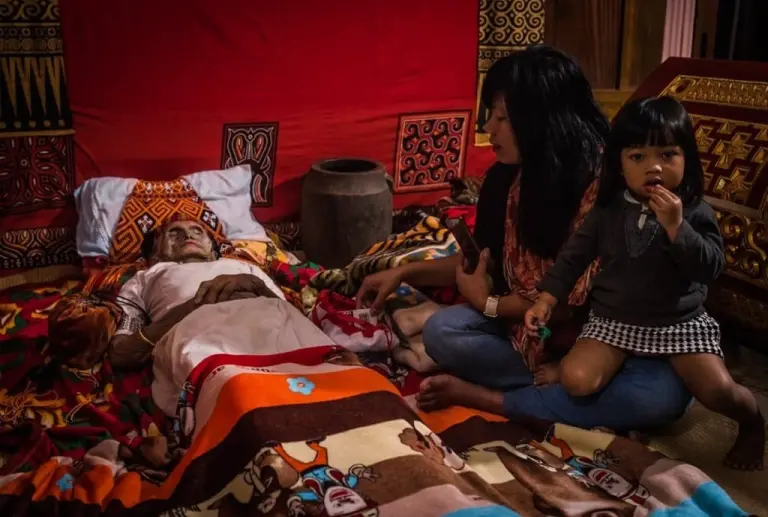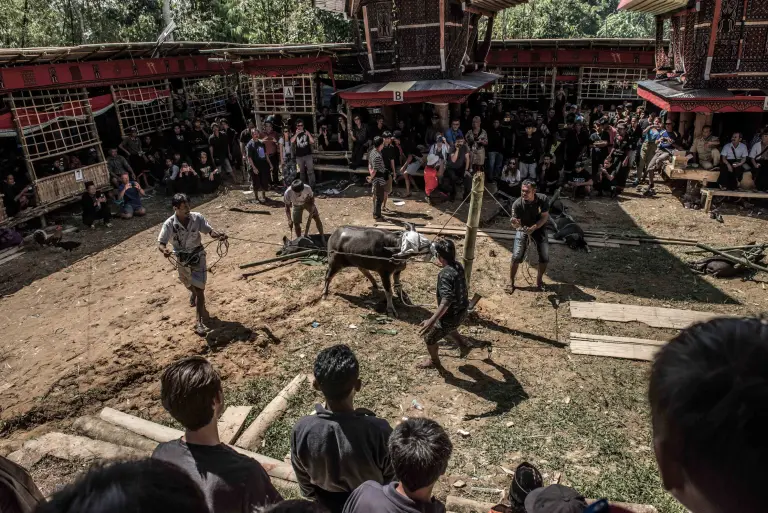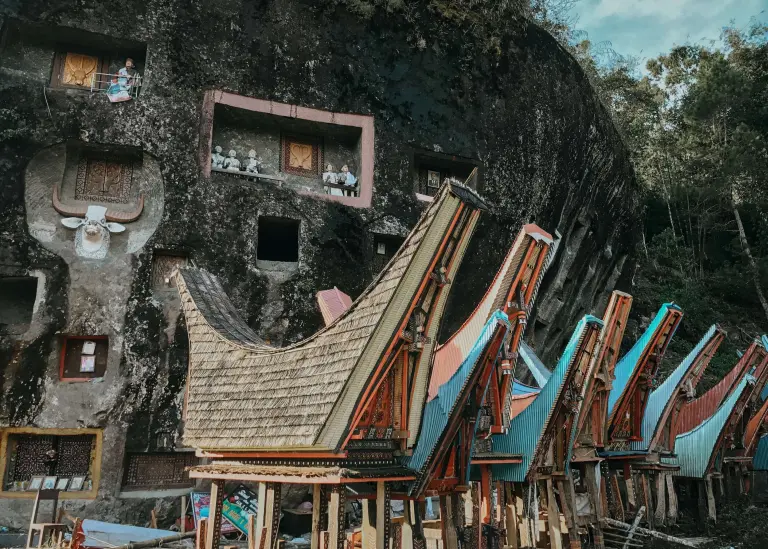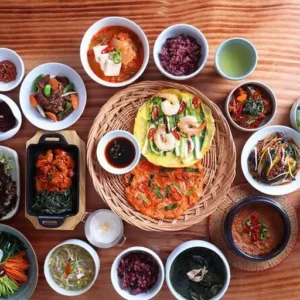In the lush highlands of Tana Toraja, Indonesia, where mist coils through the mountains and tradition runs deeper than time, a ritual unfolds that challenges how the world sees death. Here, the dead don’t immediately leave — they stay, cherished and cared for, sometimes for months or even years.
This is not a horror story — it’s a profound act of love.
Welcome to the unique world of “Living with the Dead”, a sacred cultural practice that invites us to rethink our understanding of life, death, and what it means to truly honor those we’ve lost.
What Is “Living with the Dead”? Understanding the Toraja Tradition
Among the Torajan people in South Sulawesi, Indonesia, death is not the end — it’s a long, sacred transition. When someone dies, their body isn’t immediately buried. Instead, they are kept at home, mummified, clothed, and spoken to as if still alive.

The deceased is considered “sick” or “asleep” rather than gone. Families continue to feed them, change their clothes, light incense, and even include them in daily conversations.
This extraordinary custom is part of a broader Torajan funeral tradition, where burial is delayed until the family can afford an elaborate and communal funeral ceremony, sometimes saving for years.
Why Do the Torajans Live with the Dead? A Journey of Respect and Love
For the Torajans, death is not an abrupt goodbye — it’s a gradual farewell. The deceased is treated with dignity and affection, never forgotten or abandoned. This long goodbye allows families to mourn properly, gather relatives, and save for funerals that last days or even weeks.
The concept reflects a deep philosophy: the dead are not gone — they are still part of the community. They are honored, included, and never truly separated from the living.

Ma’nene: The Ceremony of Cleaning the Corpses
Even after burial, the relationship with the dead continues. Every few years, families perform a ritual called Ma’nene, or the “Ceremony of Cleaning the Corpses.” During Ma’nene:
- Bodies are exhumed from their graves or traditional cliffside tombs
- They are cleaned, groomed, and dressed in fresh clothes
- The dead are carried around the village and sometimes posed for photographs with relatives
This tradition, unique to Tana Toraja, is not a spectacle — it’s a reunion. It’s a joyful moment to reconnect with ancestors, pass down stories, and preserve generational bonds.

>> Self-Mummification: The sacred journey beyond death you’ve never heard of
Where and When to Witness These Rituals
- Location: Tana Toraja Regency, South Sulawesi, Indonesia
- Best time to visit: July to September, when funeral ceremonies and Ma’nene are most commonly held
- How to get there: Fly to Makassar, then travel 8–10 hours by road to Rantepao, the cultural heart of Tana Toraja
Travelers can visit family homes, explore burial cliffs, and — with respect — observe the rituals if invited by locals or with a reputable guide.
What It’s Like to Experience “Living with the Dead” as a Visitor
Visiting Tana Toraja is like stepping into another realm — where time slows, spirits linger, and ancestors walk beside the living. Here’s what you might witness:
- Mummified loved ones resting in bamboo beds or traditional houses
- Elaborate funeral ceremonies with buffalo sacrifices, dances, and storytelling
- Stone graves carved into cliffs and hanging rock tombs, adorned with wooden effigies called “tau-tau”
- Families smiling and proudly introducing their deceased relatives
Rather than fear or sadness, the atmosphere is often joyful, respectful, and full of meaning.

“It was humbling,” one traveler shared. “They didn’t treat death with fear. They treated it with love. It made me rethink everything I thought I knew about loss.”
>> El Colacho: Spain’s Baby-Jumping festival you have to see to believe
Why You Should Travel to Tana Toraja
- Experience one of the world’s most unique cultural rituals
- Witness a rare blend of animist beliefs, Christian traditions, and ancestral reverence
- Explore scenic rice terraces, buffalo markets, and cliffside tombs
- Connect with locals and learn about their deeply spiritual worldview
- Leave with a newfound respect for life, death, and everything in between
Travel Tips for Visiting Tana Toraja
- Dress modestly and be respectful — you are witnessing sacred traditions
- Hire a local guide who can explain customs and connect you with welcoming families
- Plan ahead — funeral ceremonies are often announced locally and can be days long
- Be prepared for emotional, thought-provoking, and awe-inspiring moments

>> Baby-tossing: The breathtaking ritual that turns faith into flight
Living with the Dead: A Sacred Connection That Never Dies
To the outside world, living with the dead might seem strange — even macabre. But in Toraja culture, it is an act of devotion. A declaration that love doesn’t end when a heart stops beating.
This is not just a ritual. It’s a worldview. A way of saying: “You may have died, but you are still part of us.”
In Tana Toraja, death doesn’t break families apart — it brings them closer together. So, if you’re seeking a destination that challenges your perspective, fills your heart, and stays in your soul forever…
Travel to the highlands of Sulawesi.
Meet the living.
And meet the dead.
They’re waiting — with open arms.
There are many interesting things in Indonesia. Let’s explore the cuisine, culture and interesting destinations in this country.






